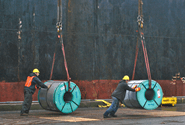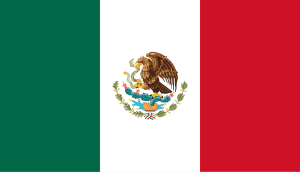
Steel export volumes weaken in September
Following August’s modest 4% uptick, the volume of steel shipped outside of the country slipped 8% in September to 594,000 short tons, according to recently released data from the US Department of Commerce.

Following August’s modest 4% uptick, the volume of steel shipped outside of the country slipped 8% in September to 594,000 short tons, according to recently released data from the US Department of Commerce.

In our opinion, it is striking that for all the bold talk about establishing a "common external tariff" — or "Fortress North America" — the solutions being proposed fail to live up to their promises. As we have commented recently, USMCA certainly needs a rethink. But we have serious concerns about Canadian and Mexican proposals that suggest common trade policies that are, as we see it, more illusory than effective.

According to recently finalized US Commerce Department data, US steel imports tumbled to a near five-year low in September

The Pennsylvania Commonwealth Court has sided with Wheatland Tube, a Zekelman Industries company, in a landmark trade ruling that bars public agencies and contractors in the state from using Mexican-made steel conduit in state-funded projects.

The American Iron and Steel Institute’s (AISI's) Kevin Dempsey gave a series of policy proposals ahead of the review of the USMCA trade agreement next year.

US steel imports declined considerably in September and October, with trade falling to reduced levels not seen in nearly five years.

ArcelorMittal's Mexican operations have faced a turbulent stretch over the past two years, marked by labor unrest and operational setbacks at its Lázaro Cárdenas steelworks.

SMU sits down with Barry Zekelman to talk North American trade and the state of the US and Canadian steel industries.
Ternium closed the third quarter with steady shipments and improving margins. But trade policy uncertainty and subdued demand in Mexico weighed on the Latin American steelmaker’s results.
Flack Global Metals (FGM) announced Thursday that it would expand into Texas by assuming the Houston operations of NSPS Metals.
North American auto assemblies declined in September, down 5.1% vs. August. And assemblies were also down 1% year on year.

Our average HR coil price increased $5/short ton from last week, marking a second consecutive week of modest gains. Market participants generally attributed the increase to...

A former CEO goes to court for swiping tin. An OEM distributor slams the bankruptcy trustee for failing workers and creditors. The steelmaker fires back. Angry employees demand back pay as tensions rise in Monclova's steel saga.
Gerdau is repositioning its North American business to capitalize on a sharp shift in steel trade flows driven by elevated tariffs across the US, Canada, and Mexico.

Representatives of at least six companies interested in acquiring AHMSA have reportedly begun to carry out physical inspections of the insolvent company’s assets.

Jack Biegalski, former president and CEO of American Heavy Plates, has been named the new CEO of the Esmark Steel Group.

AHMSA is opening its doors to potential buyers to tour its steel plant and mining operations in northern Mexico in preparation for the next stage of its bankruptcy process: the auction of its assets.

Following a 3% decline in June, the amount of steel shipped outside of the US edged up 1% in July to 623,000 short tons. July was the sixth-lowest monthly export rate since the COVID-19 pandemic, and...

Mexico is considering imposing steep tariffs on imports of steel, automobiles, and over 1,400 other products. Its target? Countries with which it does not have free trade agreements, mainly China, India, Thailand, and other South Asian nations.
ArcelorMittal has partially restarted operations at its direct reduction plant in Lazaro Cardenas, Michoacan. An explosion on Aug. 18 rocked the massive steelworks on Mexico’s Pacific coast, impacting production of direct-reduced iron (DRI).
Ternium CEO Máximo Vedoya predicts that China is going to reduce its steel overcapacity.
Karla Lewis, president and CEO of Reliance Inc., told attendees of SMU’s Steel Summit 2025 that North America’s largest service center company is eyeing strategic opportunities in Mexico.
ArcelorMittal reported a "strong" explosion at the direct reduction part of its massive Lazaro Cardenas mill in Mexico.
North American auto assemblies declined in July, down 16.4% vs. August. But, according to GlobalData, assemblies were 2.4% ahead year on year (y/y).

The volume of steel shipped outside of the country in June fell 3% from the prior month to 618,000 short tons (st), according to recently released data from the US Department of Commerce.

Following January’s pre-tariff surge, imports have remained low since February compared to post-pandemic volumes

Truchas works in Lazaro Cadenas, Michoacan, western Mexico. Repairs may take up to six months.
Latin American steel producer Ternium delivered a solid performance in the second quarter of 2025. Performance was driven primarily by higher realized steel prices in Mexico, even as shipment volumes declined slightly across its regional portfolio.
North American auto assemblies declined in June, down 10.6% vs. May. And, according to GlobalData, assemblies were 3.1% down year on year (y/y).
Evraz NA and Welded Tube of Canada have lodged an unfair trade complaint against imports of OCTG, including those from USMCA trading partners Mexico and the US.